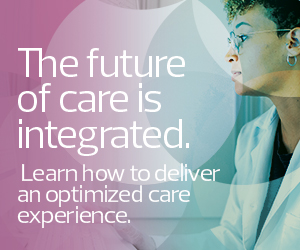1. Make Nursing Stakeholders a Priority
At UMMC, Davis said, a lack of nursing staff and nurse burnout were major concerns that contributed to re-examining virtual nursing as a necessary solution. The health system had previously tested virtual nursing in a critical care setting, but that program was short-lived. The chief nursing officer drummed up interest this time, and virtual nursing was once again on the table.
The chief nursing officer and her team, Davis added, kept nurses at the forefront of the virtual nursing conversation, even hosting sessions to hear what their biggest pain points were and how they thought the program’s success should be measured.
At the Kansas City, Mo.-based St. Luke’s Health System, nurse stakeholders play an important role in the ongoing improvement of an established virtual nursing program.
“As a nurse, I want to be part of the group that is changing nursing. I don’t want someone to change nursing for me and tell me what to do with my profession,” Cox said. “The organization was really looking to the nurses to say, ‘How do you think we sustain this? How do we solve these problems?’”
WATCH: Atrium Health’s virtual nursing observation program mitigates clinician burnout.
2. Start with Existing Technologies
Close collaboration with the IT team meant that St. Luke’s could use existing equipment for its virtual nursing program, repurposing what it already owned to save money.
UMMC also mostly stuck to that route. “We used what we already had. We use the monitoring system that was already in place in the organization,” Davis said.
Health services provider Optum, a subsidiary of payer UnitedHealth Group, offers in-home assessments for members through its HouseCalls program. Miller, a geriatric nurse by training, said that the COVID-19 pandemic spurred the organization to rapidly deploy virtual care in 2020. The federal telehealth allowances at the time made it easier to use FaceTime and Google Duo (which became Google Meet in 2022) so that the advanced practice clinicians could still provide care.
Miller said that that this became an opportunity to discover how much tech support figured into the deployment of virtual care, especially since many of Optum’s members are older adults.
“The amount of time during the appointment that was to be spent on fixing IT issues was not making this very scalable,” she said. That pushed the organization to stand up a dedicated IT team to help with tech issues during appointments.
READ MORE: Realize the power of virtual care solutions to better connect patients and providers.
3. Customize Your Virtual Nursing Program
Healthcare organizations can’t expect a one-size-fits-all approach to virtual nursing. They need to make sure their virtual nursing programs are tailored to their health system’s needs, Miller said.
One need could be releasing bedside nurses from repetitive administrative tasks that can be handled by someone who is not in the room. UMMC found that having a virtual nurse do admission paperwork freed up time for the bedside nurse to do more important, in-person tasks. The discharge process also became smoother and quicker using a virtual nurse.
“The virtual nurse, when they are with a patient, they are with that patient 100 percent. They're not being called away for other things,” Davis said.
Healthcare organizations must figure out their priorities and discover for themselves how virtual nursing aligns with their strategic missions.“That was one of the conversations we had in the beginning: What do the nurses currently do that can safely be done by someone who is not in the room?” Davis said. “So, we took those tasks away from the bedside nurse. They also have a team now, rather than feeling like they're the only nurse for this patient. They know that they have this help throughout the day.”











